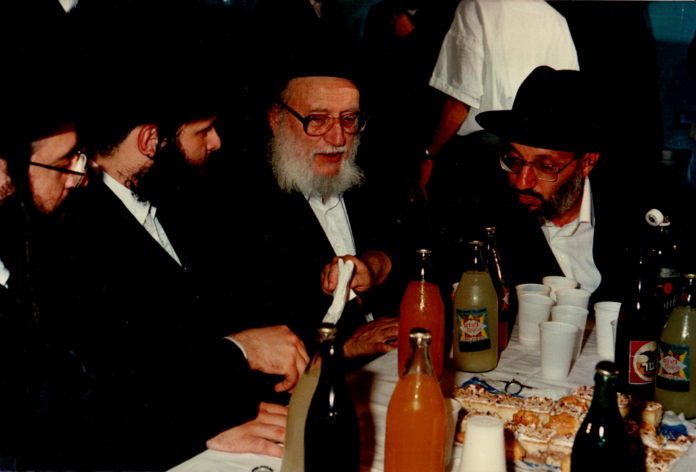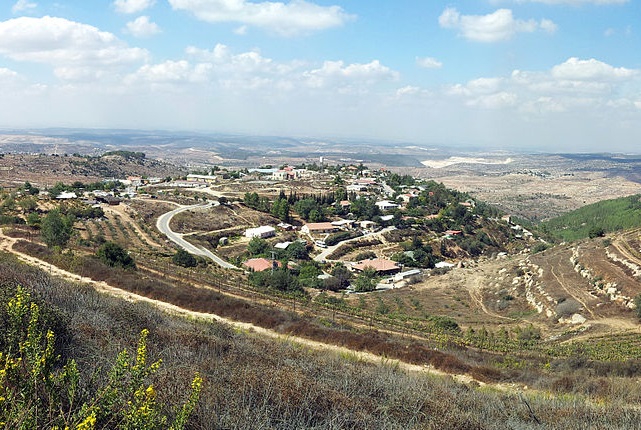Yosef Sholom Rabin, Sha’arei Chesed, Yerushalayim
I was born and raised in the “Goldene Medinah” (lehavdil!), America, and spent most of my years in Passaic, NJ. For seven years I was zoche to absorb myself in the amazing Torah environment of Yeshivas Talmidei Telz in Riverdale, NY, after which I came to learn in Eretz Yisroel by R’ Meir Soloveitchik, zt”l. Toras Brisk and an emphasis on “tiffeh [deep] lomdus” were definitely a big part of my day back then, playing a significant role in my “Eretz Yisroel Yeshiva experience.” Today I am married with two kids, bli ayin hara, studying Israeli law, and also koveia itim laTorah to the best of my ability, happily living in Yerushalayim Ir HaKodesh.
My family had been coming to Eretz Yisroel for the Shalosh Regalim for a number of years and the decision for me to live permanently in Eretz Yisroel was somewhat natural. B”H I met my wonderful wife here and have been married and living here happily ever since. Obviously, it takes time getting used to the somewhat aggressive (and what can sometimes appear as obnoxious) Israeli culture, but I feel that there’s nothing more special than having the opportunity to live “B’Eretz asher Einei HaShem Elokecha bah meireishis hashanah v’ad acharis shanah,” or in other words, “HaShem’s backyard.” For thousands of years Yidden from all corners of the world davened to return to Eretz Yisroel, and B”H we have merited to see these tefillos come to fruition in our times. The Seven Nevu’os of Nechama take on a new and more palpable meaning as we witness the growth and tremendous hatzlacha of the Jewish people in Eretz Yisroel with our very own eyes.
The truth is that I had “life easy” with regards to some of the challenges chutznikim face when coming to Eretz Yisroel, but I can still relate to some of them on various levels and have B”H been active in helping to find solutions. The main problems everyone talks about is the lack of “normal chinuch,” finding jobs (especially for the women with regards to kollel yungerleit), and affordable housing within a warm kehillah.
As for housing, we’ve recently been looking seriously into moving to a Chareidi Yishuv and have been specifically interested in a place called Meitzad, which is about forty minutes from Yerushalayim by car and twenty minutes from Beitar. There is a wonderful cheider and developing Bais Yaakov there, but what attracted us most was the feeling of being in a somewhat “remote location” (not really, just feels like it), far from the hustle and bustle of the city, the large and spacious geographical setting, and the amazing views of Midbar Yehudah [the Judean Desert]. Furthermore, unless you go two or three hours up north or down south, nothing can beat the prices there and the size of the properties as well.
The language barrier can make everything exceedingly more difficult, but from my experience, once you’ve decided to “jump in” and “become Israeli,” conquering Ivrit is somewhat less terrifying. The fact that for many, their immediate family is almost three thousand miles away is also very challenging, but B”H with technology today, connecting overseas has become a lot easier. Still, nothing can replace having your shver and shvigger around the corner or spending a family Shabbos together without having to think twice. Baruch HaShem, I’m zoche to have both (almost), but I have many friends who suffer from this issue daily. When asked about these problems I often respond that chazal say “Eretz Yisroel nikneis beyissurim” and halevay that these are my only yissurim. Yes, coming to Eretz Yisroel to PERMANENTLY LIVE HERE—not for a vacation, not for yarchei kallah, and not even for a year or two of yeshiva—is definitely a nisayon. But while nisyonos can be difficult, aggravating and very taxing, they also help us grow and inspire us to achieve more. The word nisayon shares the same shoresh as the word nes [miracle] and lehisnoses—to “lift up.” When we rise to the occasion and exert our “superhuman” kochos, HaShem makes miracles for us as well and shows us the path to hatzlachah.
Of course, there is so much to see and experience in Eretz Yisroel from a geographical and historical perspective as well. From the beautiful Golan Heights down to the sun scorched Eilat, Eretz Yisroel is filled with breathtaking views, Jewish history and archeology soaked into its very essence. The mesirus nefesh of our ancestors and Jewish brethren is firmly planted in the Land and serves as a powerful source of inspiration to help us understand our unique tafkid here.
Whether it’s the taxi driver who mentions Shem HaShem every third word, the receipts that say chag sameach, and just the overall experience of seeing Jews from all backgrounds coming home after so many years in galus, something about Eretz Yisroel continues to tickle my neshamah and demand ever higher levels of Avodas HaShem, bonding with Klal Yisroel and true Tikkun Olam beMalchus Shakai. May it be the Will of HaShem that all of Klal Yisroel merit to fulfill this wonderous mitzvah of living and truly thriving in Eretz Yisroel, and may we then merit the coming of Moshiach and the geulah sheleimah bekarov!
Creating a Voice for Chutznikim
One confusing “headache” for chutznikim is understanding the political scene (or mess) here in Eretz Yisroel…. In contrast to America, politics could actually have a direct impact on people’s day-to-day lives, so it is somewhat more important to pay attention to things. I think that American Chareidim in Eretz Yisroel could definitely help advance the general agenda of the Chareidi tzibbur here. They can also help create a voice for the unique needs of the slightly different chutznik mentality.
As a member of an organization called Kedushas Tzion, working towards bringing the government closer to Torah values and halachah is, to me, a particularly meaningful part of our goal. The more we can strengthen and broaden the influence of the Chareidi community here, the closer it will be to becoming a reality.
Reprinted with permission from Avira D’Eretz Yisroel.



